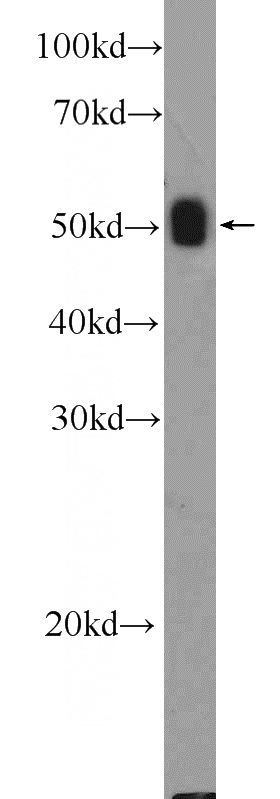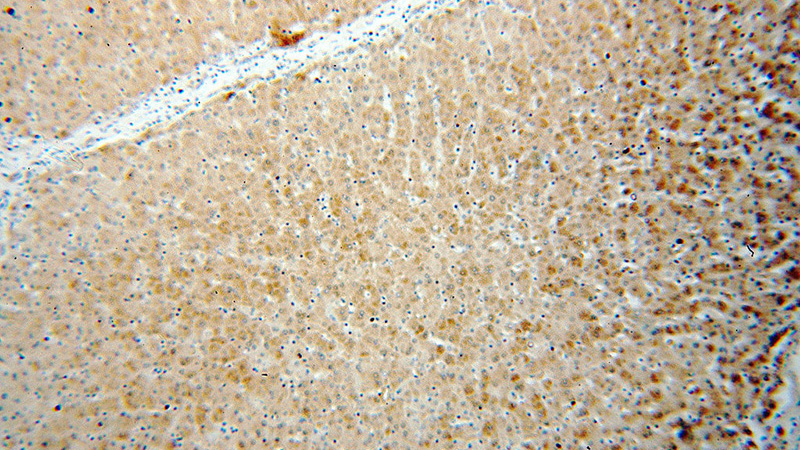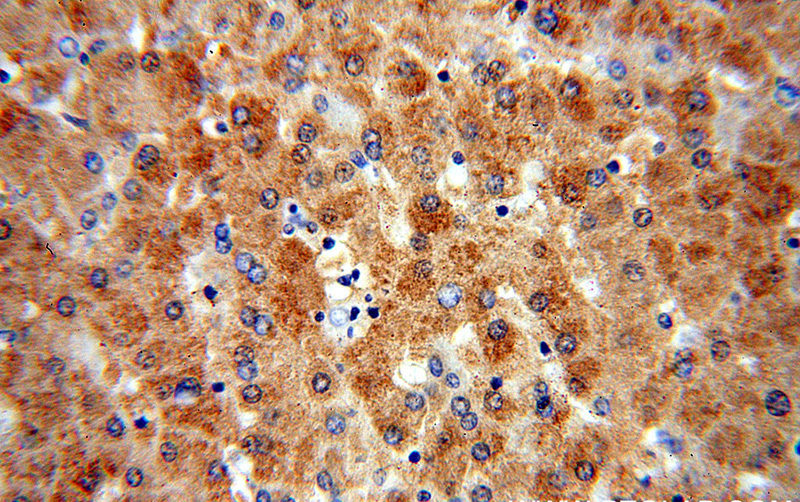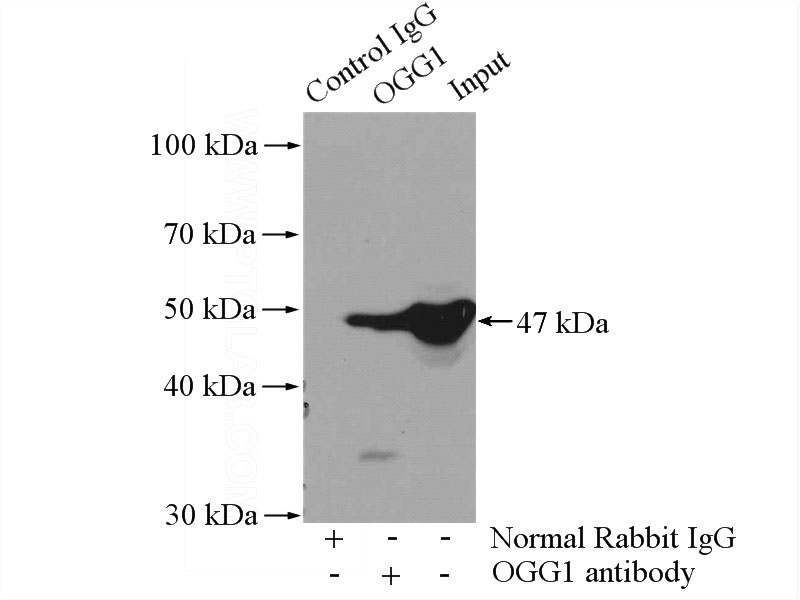-
Product Name
OGG1 antibody
- Documents
-
Description
OGG1 Rabbit Polyclonal antibody. Positive WB detected in mouse skeletal muscle tissue, HeLa cells, human heart tissue, mouse heart tissue, mouse kidney tissue, rat brain tissue, rat kidney tissue, Transfected HEK-293 cells. Positive IP detected in mouse heart tissue. Positive IHC detected in human liver tissue. Observed molecular weight by Western-blot: 47 kDa
-
Tested applications
ELISA, IHC, WB, IP
-
Species reactivity
Human,Mouse,Rat; other species not tested.
-
Alternative names
8 oxoguanine DNA glycosylase antibody; AP lyase antibody; HMMH antibody; HOGG1 antibody; MMH antibody; MUTM antibody; OGG1 antibody; OGH1 antibody
-
Isotype
Rabbit IgG
-
Preparation
This antibody was obtained by immunization of OGG1 recombinant protein (Accession Number: NM_002542). Purification method: Antigen affinity purified.
-
Clonality
Polyclonal
-
Formulation
PBS with 0.02% sodium azide and 50% glycerol pH 7.3.
-
Storage instructions
Store at -20℃. DO NOT ALIQUOT
-
Applications
Recommended Dilution:
WB: 1:200-1:2000
IP: 1:200-1:2000
IHC: 1:20-1:200
-
Validations

mouse skeletal muscle tissue were subjected to SDS PAGE followed by western blot with Catalog No:113335(OGG1 Antibody) at dilution of 1:600

Immunohistochemical of paraffin-embedded human liver using Catalog No:113335(OGG1 antibody) at dilution of 1:100 (under 10x lens)

Immunohistochemical of paraffin-embedded human liver using Catalog No:113335(OGG1 antibody) at dilution of 1:100 (under 40x lens)

IP Result of anti-OGG1 (IP:Catalog No:113335, 4ug; Detection:Catalog No:113335 1:500) with mouse heart tissue lysate 3200ug.
-
Background
The DNA damages induced by ROS contain base modification, base loss, and DNA single strand breaks, which are usually repaired by the base excision repair (BER) pathway in both prokaryotes and eukaryotes. OGG1 (The human 8-oxoguanine glycosylase 1) is the primary enzyme in BER pathway, responsible for the excision of 7, 8-dihydro-8-oxoguanine (8-oxoG), a mutagenic base byproduct that occurs as a result of exposure to reactive oxygen species. There's 8 isoforms of OGG1, with calculated MW 22 kDa, 36-40 kDa and 45-57 kDa. The difference among these isoforms is the C-terminal (317-345aa). Our OGG1 antibody detects all the isoforms. We always got the strongest 47 kDa corresponds to isoform Beta in our detection and some weaker bands (with long time exposure). The expression amount of Beta is higher than other isoforms from our data. This antibody has been cited in more than 4 publications, WB and IHC detection in mouse and human.
-
References
- Sriram S, Subramanian S, Juvvuna PK. Myostatin induces DNA damage in skeletal muscle of streptozotocin-induced type 1 diabetic mice. The Journal of biological chemistry. 289(9):5784-98. 2014.
- Adihe Lokanga R, Zhao XN, Entezam A, Usdin K. X inactivation plays a major role in the gender bias in somatic expansion in a mouse model of the fragile X-related disorders: implications for the mechanism of repeat expansion. Human molecular genetics. 23(18):4985-94. 2014.
- Lokanga RA, Senejani AG, Sweasy JB, Usdin K. Heterozygosity for a hypomorphic Polβ mutation reduces the expansion frequency in a mouse model of the Fragile X-related disorders. PLoS genetics. 11(4):e1005181. 2015.
- Dong H, Shi Q, Song X. Polychlorinated biphenyl quinone induces oxidative DNA damage and repair responses: The activations of NHEJ, BER and NER via ATM-p53 signaling axis. Toxicology and applied pharmacology. 286(1):10-6. 2015.
Related Products / Services
Please note: All products are "FOR RESEARCH USE ONLY AND ARE NOT INTENDED FOR DIAGNOSTIC OR THERAPEUTIC USE"
